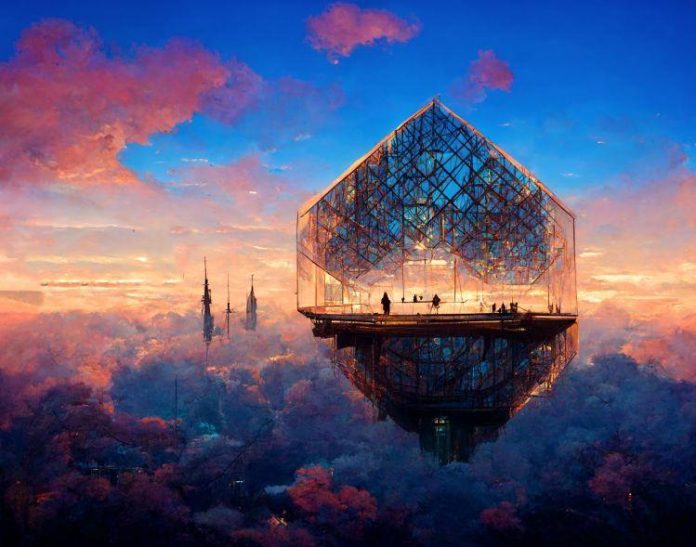
The 21st century is undeniably an era marked by significant technological advancements and innovations. Nonetheless, a considerable portion of the population remains unfamiliar with the intricacies of these technologies, from their intricate nomenclature to their operational principles. Likewise, the concept of the Metaverse may be familiar to some but continues to shroud itself in mystery for many.
However, it is worth noting that the Metaverse is not an enigma to everyone. It has, in fact, opened its doors to a diverse community, including gamers, real estate developers, architects, and interior designers, offering them the opportunity to engage, work, play, and learn within a digital realm that runs in parallel to our physical reality.
Metaverse: A Parallel Universe?

The Metaverse is not a singular entity; rather, it comprises various platforms such as Decentraland, W3rlds, and more, serving as gateways to immersive Metaverse experiences. The Metaverse brings all these platforms together in a single place. It’s a shared 3-D digital space that uses various technologies, allowing people to live double lives by taking on different digital personas called avatars.
Everything in the Metaverse is interactive. For example, you can turn into an avatar and do real-life things like working with your colleagues or hanging out with friends from different parts of the world. It’s like a big, shared, 3-D digital world where you can do lots of fun stuff.
Origin of the Metaverse
The concept of the Metaverse has its roots in Neal Stephenson’s 1992 science fiction novel, “Snowcrash.” In this novel, Stephenson delved into the possibilities of how the digital world could evolve in the coming years.
Before the term “Metaverse” was coined, there were precursor virtual worlds like Second Life, which allowed users to interact in a shared digital space. These early platforms laid the groundwork for the development of the Metaverse concept.
While the initial idea of the Metaverse emerged in science fiction, it has since transitioned from fiction to reality by drawing inspiration from the tangible world. Leveraging various online simulations, including augmented reality (AR), virtual reality (VR), and video technology, individuals can explore virtual environments that closely mimic the physical world.
Metaverse and Architecture

In the field of architecture, designers play a crucial role. However, the impact VR has on architecture and design is irreplaceable. It is a smart and straightforward method to help clients visualize the final 3D design outcome. The Metaverse enhances design processes by providing a platform for thinking, visualizing, designing, and collaborating over distances while receiving client feedback.
Furthermore, in the online landscape, there is ample room for collaboration and marketing. This aids in building a robust network that can lead to successful projects in the future. Therefore, it’s a powerful tool that complements architecture and design without overshadowing traditional practices.
Metaverse and Interior design

The Metaverse has brought a remarkable change to interior design, making it more accessible and dynamic.
Virtual interior design projects are gaining popularity, and the Metaverse seamlessly integrates with them, offering a wealth of furniture options and simplifying customization of colors and styles. This enhances the excitement and flexibility of interior design, fostering collaborative exploration between designers and clients in an ever-evolving digital space.
Moreover, the Metaverse transforms the design process by allowing the creation of immersive 3D environments. It empowers clients to step into their envisioned spaces long before physical changes are made, encouraging real-time collaboration across geographical boundaries. This fusion of technology and design redefines the practice, promising more personalized and immersive experiences as the Metaverse continues to evolve.

Metaverse: A Boon or a Bane?

The Metaverse has experienced rapid growth in recent years, expanding the horizons of digital work. It has proven invaluable in transforming concepts, thoughts, and 2D sketches into 3D designs, playing a pivotal role in achieving real-world project goals. In many respects, it serves as a boon.
While the Metaverse has introduced numerous possibilities, it cannot replicate the charm of physical structures in terms of visual aesthetics and textures. Furthermore, in design professions, one-on-one client interactions remain essential, a facet the Metaverse cannot fully replicate.
The Metaverse can never replace or overshadow the real world we cherish, but it unquestionably enhances the overall design process. It serves as a vital component of the design process, a debugging tool, but the essence of any project will always be the designer’s vision. Thus, the Metaverse is a boon rather than a bane, as it does not threaten the beauty of the real world. Architects and interior designers must harness this boon to push the boundaries of creativity, as the sky’s the limit.
Reference Links
- https://www.tallboxdesign.com/metaverse-interior-architecture/
- https://www.dwtc.com/en/industry-insights/how-the-metaverse-is-reshaping-interior-design/
- https://www.architecturaldigest.com/story/is-your-next-big-break-going-to-be-in-the-metaverse
- https://www.lovethatdesign.com/article/4-ways-the-metaverse-will-change-interior-design/
